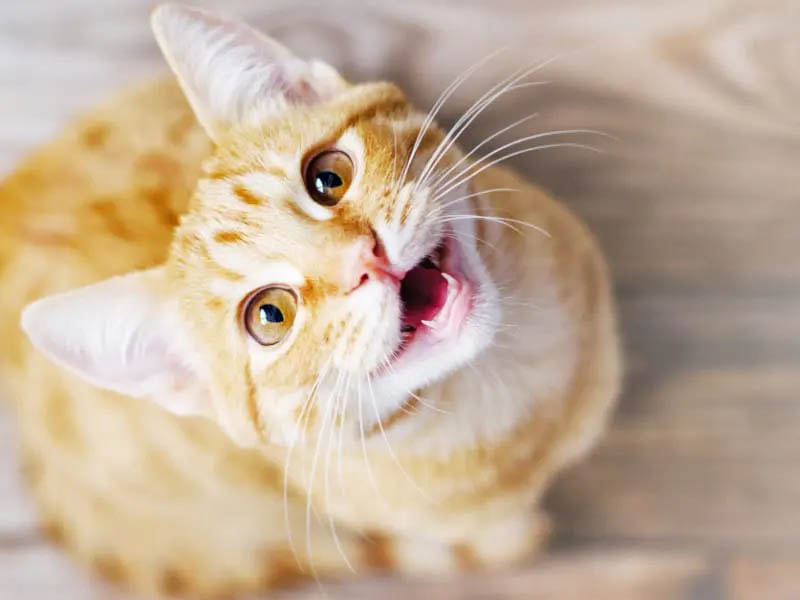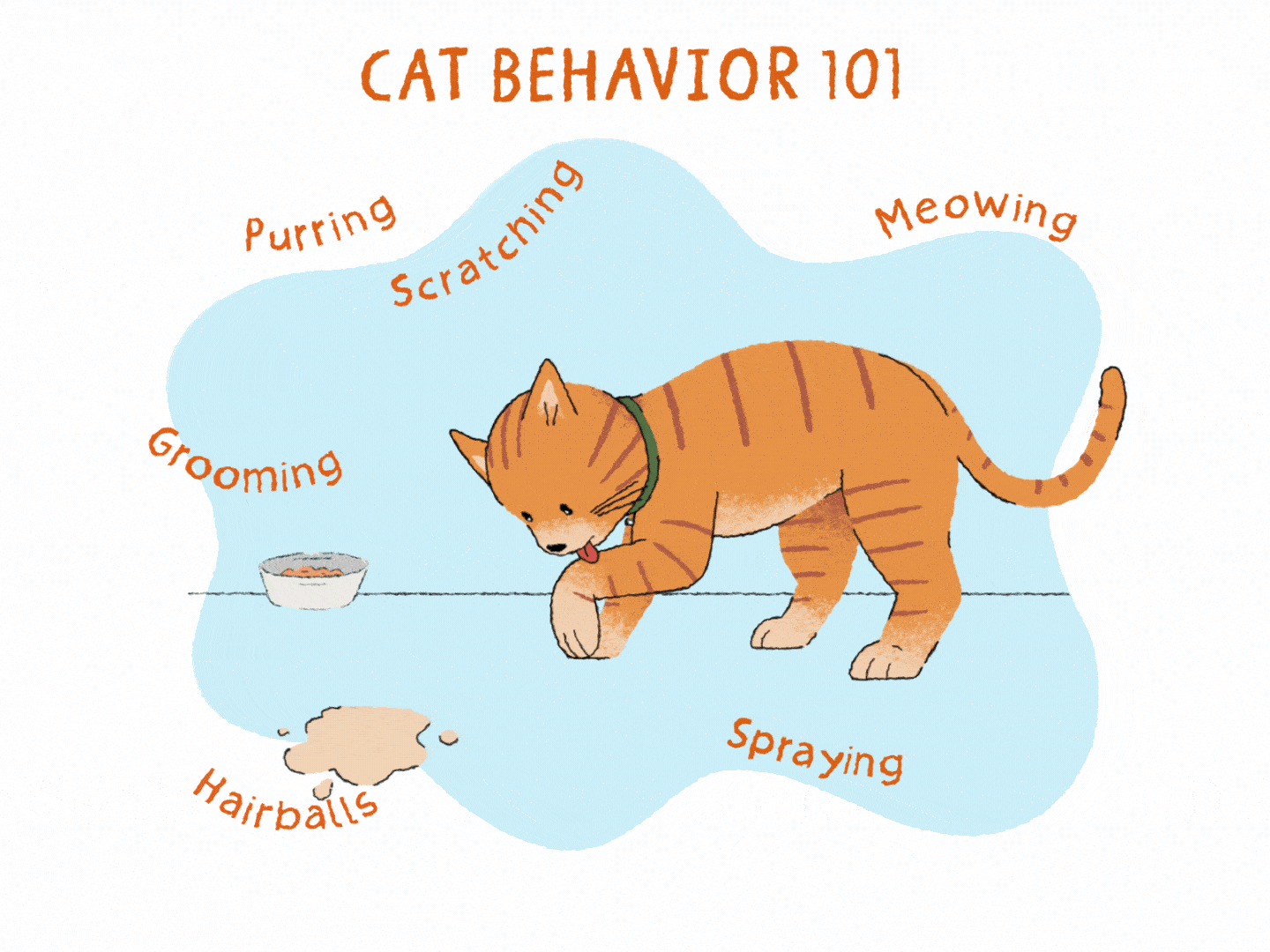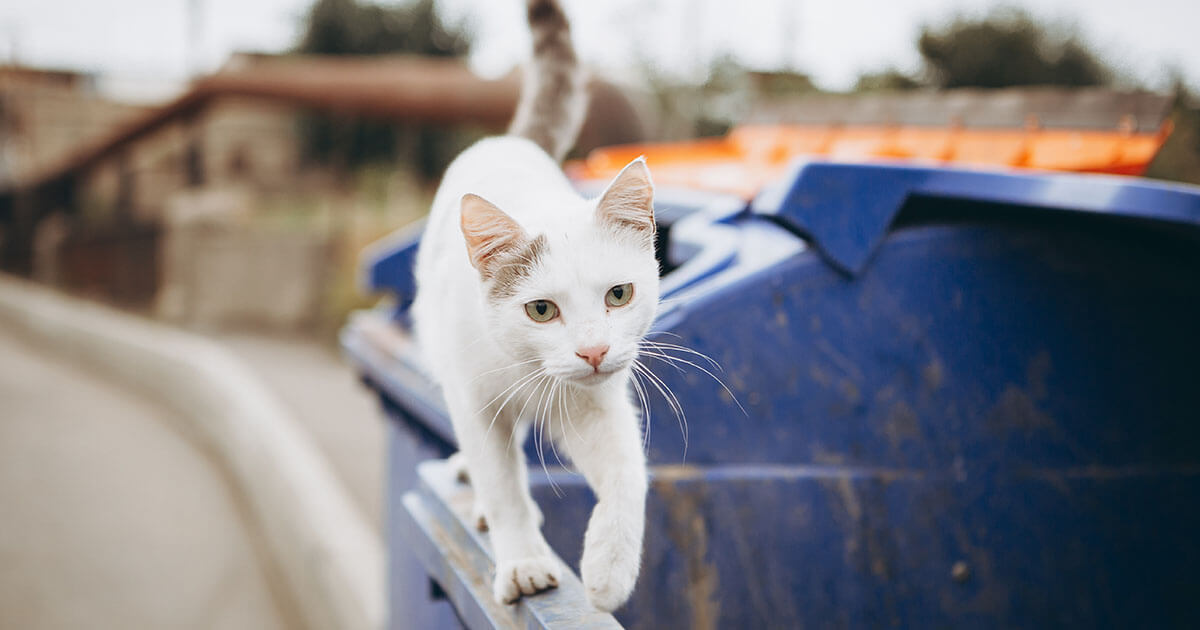A stray cat meowing nonstop is often seeking attention or signaling distress. It may be hungry, injured, or in need of shelter.
Stray cats, while independent creatures, sometimes find themselves in situations where human intervention becomes necessary for their survival. Persistent meowing can indicate various needs: a search for food, help with an untreated injury, or a desire for human companionship. Stray cats can also be in heat or experiencing stress due to environmental factors.
Understanding why a cat meows incessantly is the first step to providing appropriate assistance. By observing its behavior and physical condition, you can discern whether the cat requires medical attention, food, or a more secure habitat. Addressing these needs not only helps the cat but can also reduce excessive noise in your neighborhood.

Credit: kristenlevine.com
Stray Cats And Vocalizations
Have you ever wondered why a stray cat meows nonstop? Cats communicate in various ways, with meows being front and center. Unlike their wild counterparts, stray and domestic cats have developed a vocal language to interact with humans. A stray cat’s continuous meowing can be a puzzle. Let’s decode their sounds together.
The Language Of Meows
Stray cats vocalize for many reasons. They may be hungry, seeking attention, or in distress. Each meow varies in pitch, length, and frequency, depending on their needs. Recognizing the nuances in a cat’s meows can tell us what they are trying to convey. Here’s how to interpret some common meows:
- Short meow: A standard greeting or a call for attention.
- Multiple meows: Excited or eager about something, possibly food.
- Long, drawn-out mrrroooow: A demand, usually for a specific requirement such as food.
- Low pitch meow: A complaint or indication of displeasure.
- High pitch meow: A sign of pain or fear.
Comparing Stray And Domestic Cat Sounds
Stray cats and those that live indoors may sound similar, but often, there’s a difference. Domestic cats typically have a broader range of vocalizations. Their sounds are tailored to communicate with their human families. In contrast, stray cats might have a more limited set, often associated with survival. They meow to express immediate needs or threats.Notice the tone and frequency—they hold valuable clues about a stray cat’s state of mind.
| Stray Cat Sounds | Domestic Cat Sounds |
|---|---|
| More urgent meows for food or help. | Variety of meows, purrs, and other sounds for affection and attention. |
| Less frequent purring, often a sign of wariness. | Regular purring as a sign of contentment with their environment. |
| Growls and hisses in response to threats. | Growls and hisses, less common, often during encounters with unfamiliar cats or situations. |
Deciphering The Meows
Cats communicate in mysterious ways, and their meows are no exception. Non-stop meowing from a stray cat might seem like a puzzle. But, with a bit of knowledge, you can start to understand what they need. Let’s decipher these vocal cues and find out why the stray is so vocal.
Hunger Or Thirst
If a stray cat won’t stop meowing, check if they’re hungry or thirsty. A cat’s meow can often be a simple plea for food or water. Look for these signs:
- Consistent meowing around meal times
- Meowing near the food bowl or in the kitchen
- Licking its lips or searching for scraps
Offering a small meal or fresh water can quickly quiet down their calls.
Seeking Attention
Strays often crave companionship. They meow to make human friends and get some love. Recognize their desire for attention by:
- Observing if the meowing stops when you pet them
- Noticing if they follow you, meowing for interaction
Spending some time playing or petting might be all they need.
Health Issues And Distress
Sometimes, meowing is a sign of pain or distress. A stray cat might not be just seeking food or affection, but also help with a health issue. Look out for:
| Signs of Distress | Action to Take |
|---|---|
| Limping or difficulty moving | Consider veterinary attention |
| Excessive scratching or bald patches | Check for skin issues or fleas |
| Changes in behavior or vocalization | Assess for environmental stressors |
For persistent issues, contact a vet or local animal rescue as soon as possible.
Environmental Stresses
If your stray cat won’t stop meowing, it might feel stressed by its environment. Sometimes, the world outside is tough for cats. Let’s explore some reasons why your feline friend is so vocal.
Territorial Calls
Stray cats often face fierce competition for their home area. They call out to warn others to stay away or to establish boundaries. Loud meows are their way of saying, “This is my space!”
Mating Behavior
Cats in search of a mate will meow more than usual. It’s their way of attracting partners. If a stray cat is meowing non-stop, it might be looking for love.
Predators And Threats
Outdoor cats face many dangers. They meow loudly when they sense a predator or threat nearby. This is a call for help or an attempt to scare the danger away.

Credit: www.loc.gov
Human Interaction
The constant meowing of a stray cat can tug at the heartstrings of any animal lover. Understanding why these feral felines reach out through their calls is crucial. Essential to this is human interaction, which influences stray behavior significantly.
Impact Of Feeding Strays
Feeding stray cats forms a bond. It creates an association between human presence and food. This can lead to more vocalization as cats communicate their hunger and acknowledge the source of their sustenance.
- More food equals more meowing
- Hunger prompts audibility
- Cats link humans to meals
Encouraging Communication
Every time a stray meows and receives attention, it learns. This meow becomes a tool, one that prompts human interaction. The cat doesn’t just seek food; it seeks the connection.
- Cats meow
- Humans react
- Communication strengthens
Establishing Trust
Continued interaction leads to trust. A non-stop meowing cat might be extending an olive branch, seeking safety and companionship. Acknowledge the meow, earn the trust, and a bond forms.
| Interaction | Outcome |
|---|---|
| Approach gently | Cat feels secure |
| Respond consistently | Trust develops |
Through understanding and patience, the dynamics of human-feline interaction can lead to happier, healthier stray cats.
Addressing Non-stop Meowing
Stray cats meowing relentlessly can signal various needs or concerns that demand our attention. Understanding the cause is crucial, but responding correctly could be the difference between helping and exacerbating the situation.
Responding Appropriately
Cats use their meows as a primary mode to communicate with humans. Below are steps to respond properly to a stray cat’s non-stop meowing:
- Approach the cat calmly to avoid scaring it.
- Check for visible signs of injury or distress.
- Observe if the cat seems hungry or thirsty and offer food and water.
- Provide a safe space if the cat appears threatened by its environment.
When To Seek Help
Not all situations can be handled alone. Here are criteria for when to seek help:
| Condition | Action Needed |
|---|---|
| Visible Injuries | Contact a veterinarian or animal rescue. |
| Aggressive Behavior | Keep a safe distance and call animal control. |
| Uncontrollable Meowing | Consult with a vet to rule out health issues. |
Managing Stray Populations
Stray cat populations need management to ensure healthy communities. Here are ways to contribute:
- Participate in Trap-Neuter-Return (TNR) programs.
- Support local animal shelters through volunteering or donations.
- Educate others about responsible pet ownership.
Each action helps reduce the number of homeless cats and the chances of incessant meowing distress calls.

Credit: www.banfield.com
Frequently Asked Questions For Why Is Stray Cat Meowing Non Stop
What Does It Mean When A Cat Won’t Stop Meowing?
A cat that won’t stop meowing may be hungry, stressed, seeking attention, or have a medical issue. It’s essential to observe their behavior and consult a vet if necessary.
Why Is There A Cat Meowing Outside My House?
A cat meowing outside your house could be hungry, seeking attention, or in heat. It may also be lost or wanting to be adopted.
How Do You Stop A Stray Cat From Yowling?
To stop a stray cat from yowling, neuter or spay them to reduce mating calls. Provide a comfortable shelter and regular meals to minimize distress cries. Distract the cat with toys and consider using pheromone diffusers to calm them. Consult a vet for possible underlying health issues.
Why Is Stray Cat Meowing So Much All Of A Sudden At Night?
A stray cat may meow more at night due to hunger, seeking attention, or during mating season. Sudden nighttime meowing can also signal distress or illness. It’s important to assess the situation to determine the cause and provide appropriate assistance if needed.
Conclusion
Persistent meowing in stray cats can stem from various causes. It’s vital to observe their behavior and environment. Understanding their needs may require patience and empathy. Acting promptly, whether through veterinary care or providing essentials, can quell their distress. Compassionate action is key to silencing their constant calls.

